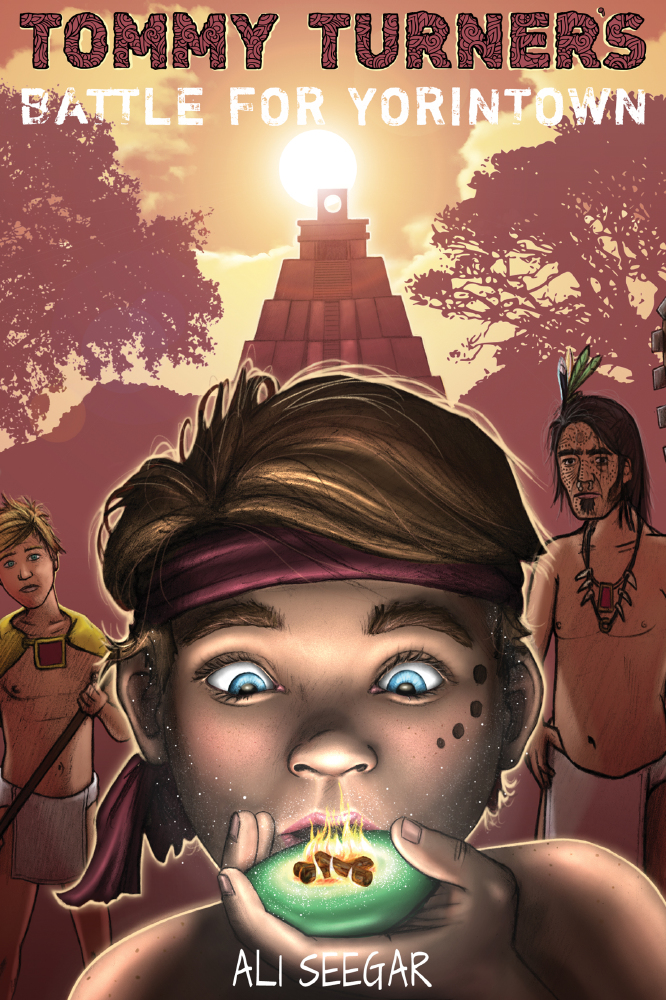I was recently asked the question: how do I write difficult or educational topics into my books without lecturing, boring or—worse of all—discouraging children from reading. I admit it was a challenge when I first started writing my pre-teen Tommy Turner series; there were many positive traits I wanted to show through my protagonist, Tommy’s actions, yet that could easily have turned him into a one-dimensional character. I realised I first needed to make the reader relate to him, to want him to succeed, and the best way to do that was to give him vulnerabilities… to make him human.

Tommy Turner's Battle for Yorintown
The Tommy Turner series is a mix of time-travelling adventure, school/family stories, with a dash of history thrown in (speculative fiction as it is sometimes called). I deliberately chose broad, imaginative settings that allowed serious topics to be brought smoothly into the storyline: an alien planet dying due to climate change (Tommy Turner’s Battle for Yorintown), poverty and famine told through the memories of an old Russian shopkeeper (Tommy Turner’s Tremendous Travels). The situation Tommy finds himself in at the beginning of the series—the only dayboy at boarding school—is taken directly from my own experiences, and I was able to tap into my vivid memories of being the pupil that did not quite fit in.
When writing children’s books, how fully I explore difficult subjects depends on the age of the reader: young adult (YA) books, for instance, tend to be more emotionally complex and so topics can be handled at a deeper level. For the age group (8 to 12 years old) and style of books I am currently writing, I try not to dwell for too long on challenging topics but rather place them into the inquisitive reader’s mind: I do not feel my job is to explain every detail but rather give a broad brushstroke, and write a dynamic scene to show what it means. Many current issues, climate change for example, are already taught in schools and talked about in the media and elsewhere, and it is great to see children actively involved in these important matters. I feel that my role as a children’s author is to complement this teaching with my writing, whether I set the scene in a real or imaginary world. For instance, in “Tommy Turner’s Battle for Yorintown” I wanted to show the results of what could happen if the inhabitants (in this case, The Anjulongs, my three-headed, bright blue aliens) did not care for their planet.
The youngest of my readers’ age group are often still reading with their parents and so this gives the family member a chance to speak further about the subject if they feel it necessary. In my first book Tommy experiences bullying and loneliness, and if my book helps a child or an adult to be able to speak to about the subject then I feel I may have helped in a small way.
One thing I am resolute about is research down to every small detail. If I can not verify a fact three or four times, even if it is as small as whether the ancient Maya kept dogs as pets (as I needed for one sentence in my new book… and, yes, they did but they also ate them), I would rather take the description out. But I feel these small details, almost insignificant to the story plot, enrich the readers’ enjoyment of the worlds I am creating and make them real.
The more I’ve written Tommy’s character, the closer I’ve become to know what he would think and feel about every situation he is put in; although often as I write, I find Tommy wants to pull in quite a different direction, and I usually let him unless it is wrong for the story plot. Knowing my protagonist so well, allows him to speak to the reader with his own words and thoughts. Some of his musings are quite deep and philosophical but they are told through the eyes of a twelve-year old boy, and so relatable to my main audience.
Ali Seegar’s second book in the Tommy Turner series “Tommy Turner’s Battle for Yorintown” is due out 1 July. The first chapter is available to read on www.tommy-turner.com

